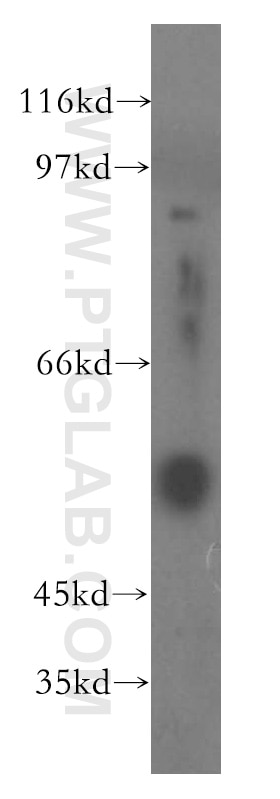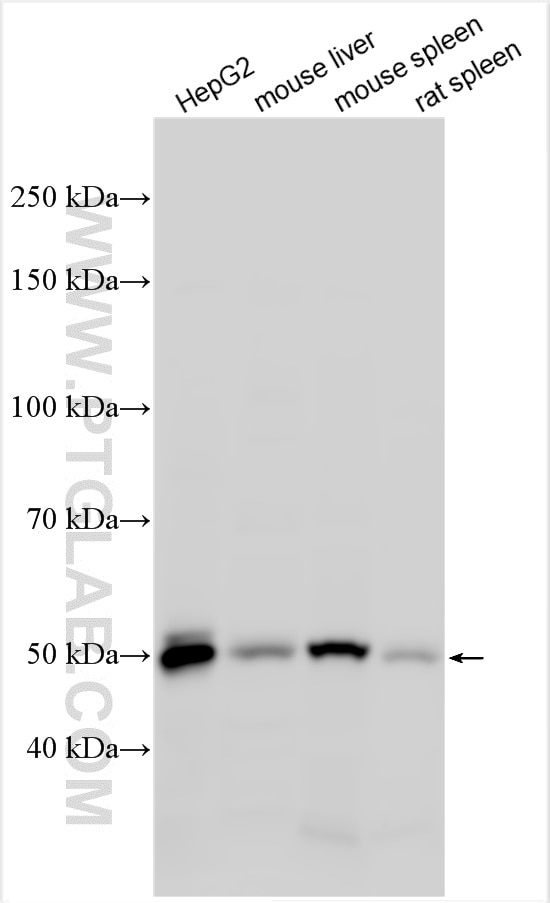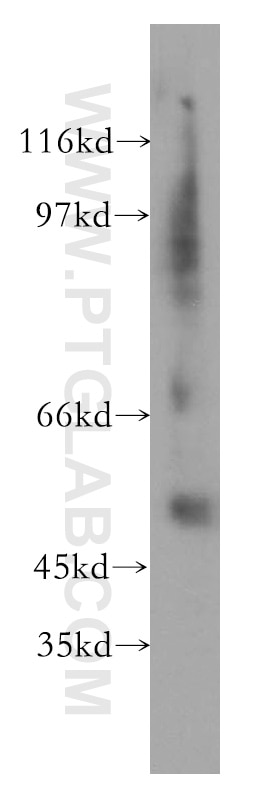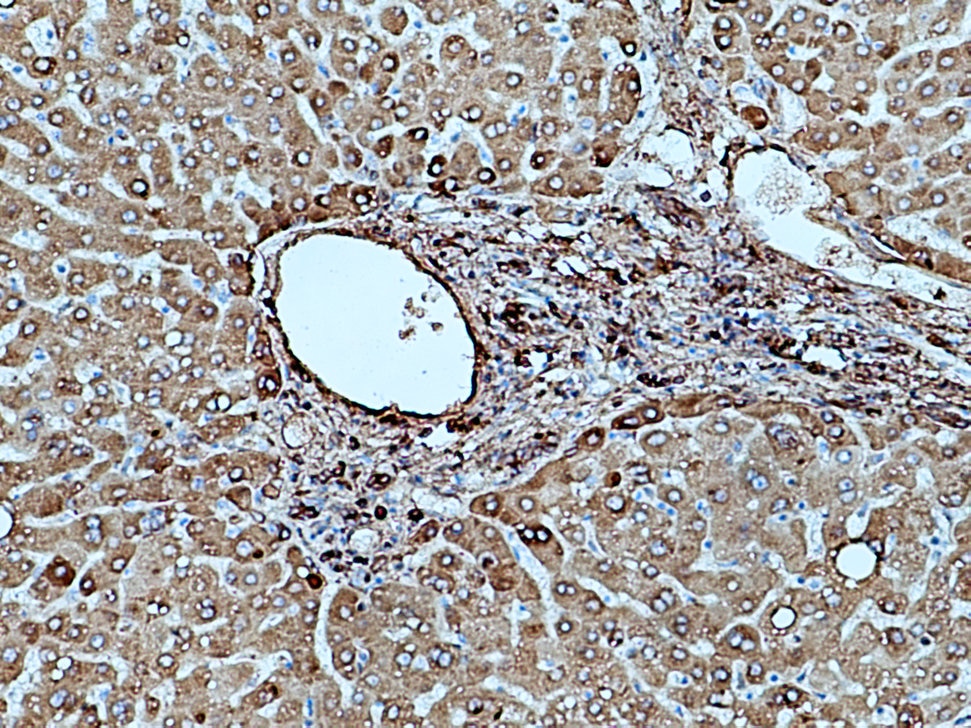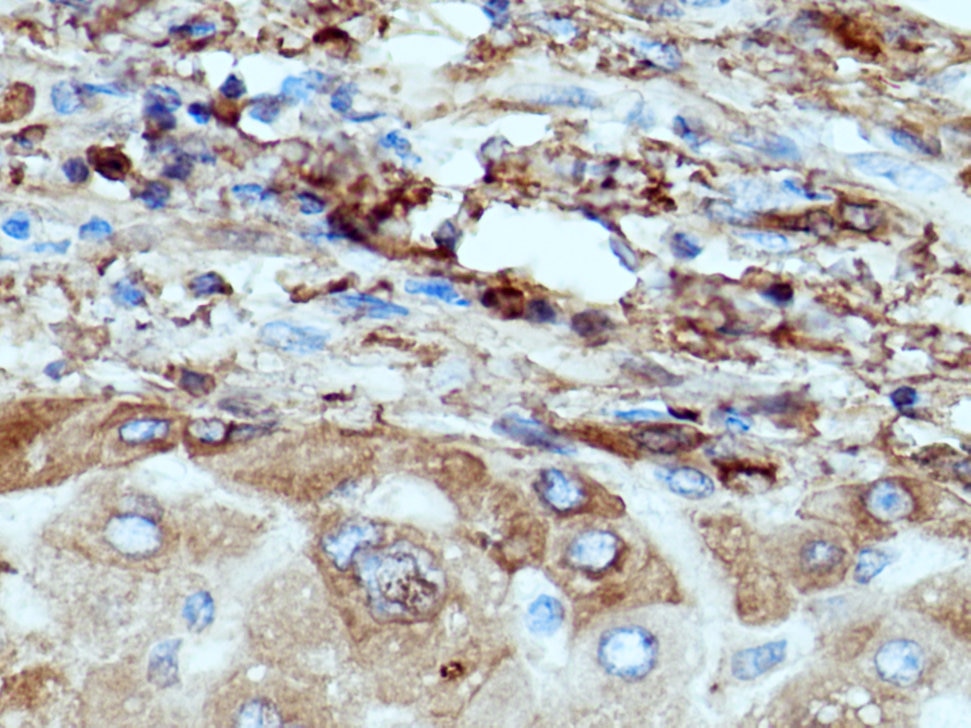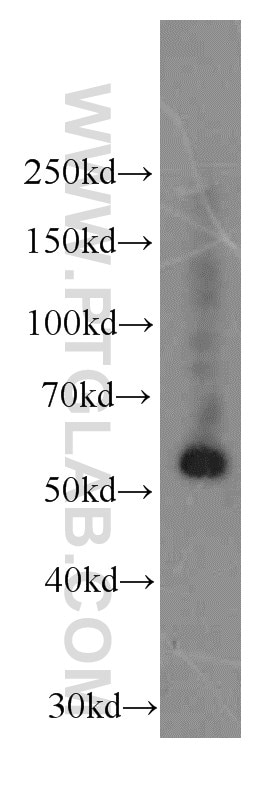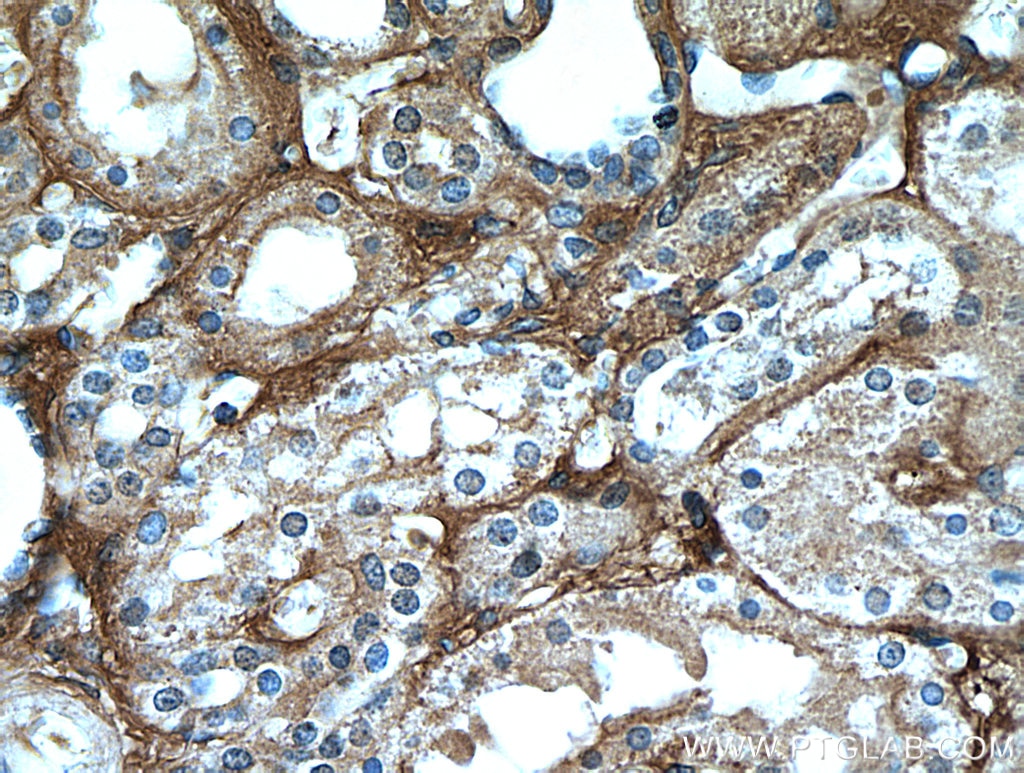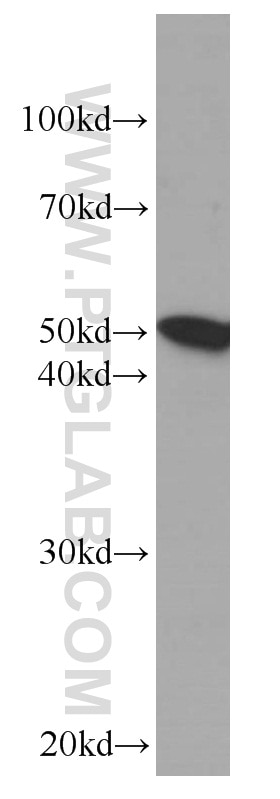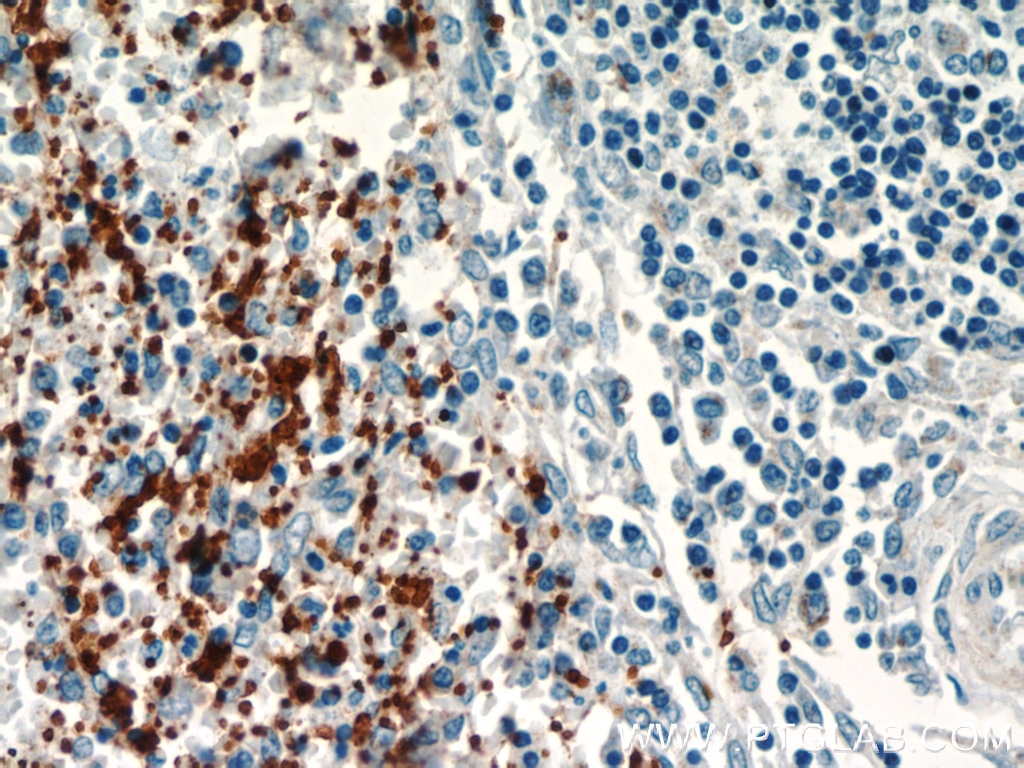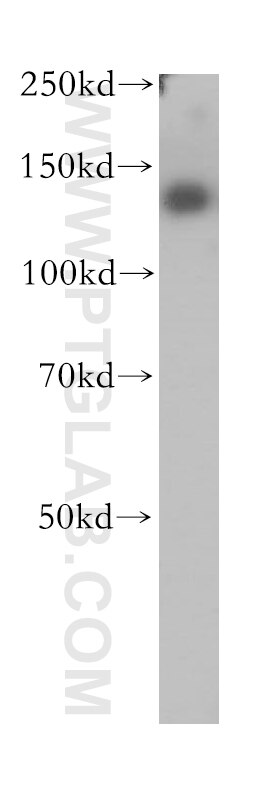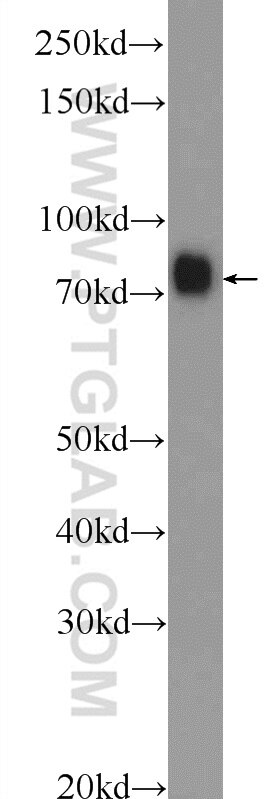- Featured Product
- KD/KO Validated
Fibrinogen Gamma Chain Polyklonaler Antikörper
Fibrinogen Gamma Chain Polyklonal Antikörper für IHC, WB, ELISA
Wirt / Isotyp
Kaninchen / IgG
Getestete Reaktivität
human, Maus, Ratte
Anwendung
WB, IHC, IF, ELISA
Konjugation
Unkonjugiert
Kat-Nr. : 15841-1-AP
Synonyme
Galerie der Validierungsdaten
Geprüfte Anwendungen
| Erfolgreiche Detektion in WB | HepG2-Zellen, humanes Lebergewebe, humanes Milzgewebe, Mauslebergewebe, Mausmilzgewebe, Rattenmilzgewebe |
| Erfolgreiche Detektion in IHC | humanes Leberzirrhosegewebe Hinweis: Antigendemaskierung mit TE-Puffer pH 9,0 empfohlen. (*) Wahlweise kann die Antigendemaskierung auch mit Citratpuffer pH 6,0 erfolgen. |
Empfohlene Verdünnung
| Anwendung | Verdünnung |
|---|---|
| Western Blot (WB) | WB : 1:1000-1:6000 |
| Immunhistochemie (IHC) | IHC : 1:50-1:500 |
| It is recommended that this reagent should be titrated in each testing system to obtain optimal results. | |
| Sample-dependent, check data in validation data gallery | |
Veröffentlichte Anwendungen
| KD/KO | See 1 publications below |
| WB | See 6 publications below |
| IHC | See 6 publications below |
| IF | See 6 publications below |
Produktinformation
15841-1-AP bindet in WB, IHC, IF, ELISA Fibrinogen Gamma Chain und zeigt Reaktivität mit human, Maus, Ratten
| Getestete Reaktivität | human, Maus, Ratte |
| In Publikationen genannte Reaktivität | human, Maus, Ratte |
| Wirt / Isotyp | Kaninchen / IgG |
| Klonalität | Polyklonal |
| Typ | Antikörper |
| Immunogen | Fibrinogen Gamma Chain fusion protein Ag8597 |
| Vollständiger Name | fibrinogen gamma chain |
| Berechnetes Molekulargewicht | 453aa,52 kDa; 437aa,50 kDa |
| Beobachtetes Molekulargewicht | 52 kDa |
| GenBank-Zugangsnummer | BC007044 |
| Gene symbol | FGG |
| Gene ID (NCBI) | 2266 |
| Konjugation | Unkonjugiert |
| Form | Liquid |
| Reinigungsmethode | Antigen-Affinitätsreinigung |
| Lagerungspuffer | PBS mit 0.02% Natriumazid und 50% Glycerin pH 7.3. |
| Lagerungsbedingungen | Bei -20°C lagern. Nach dem Versand ein Jahr lang stabil Aliquotieren ist bei -20oC Lagerung nicht notwendig. 20ul Größen enthalten 0,1% BSA. |
Hintergrundinformationen
Fibrinogen is a soluble plasma glycoprotein synthesized in the liver. It is composed of two sets of three structurally different subunits: alpha (FGA), beta (FGB), gamma (FGG). Fibrinogen is converted by thrombin into fibrin during blood coagulation. Fibrinogen and fibrin play overlapping roles in blood clotting, fibrinolysis, cellular and matrix interactions, the inflammatory response, wound healing, and neoplasia (PMID: 16102057). FGG is the gamma chain of fibrinogen. Mutations in the gene of FGG lead to several disorders, including dysfibrinogenemia, hypofibrinogenemia and thrombophilia.
Protokolle
| Produktspezifische Protokolle | |
|---|---|
| WB protocol for Fibrinogen Gamma Chain antibody 15841-1-AP | Protokoll herunterladen |
| IHC protocol for Fibrinogen Gamma Chain antibody 15841-1-AP | Protokoll herunterladen |
| Standard-Protokolle | |
|---|---|
| Klicken Sie hier, um unsere Standardprotokolle anzuzeigen |
Publikationen
| Species | Application | Title |
|---|---|---|
Blood Fibrinogen β-derived Bβ(15-42) peptide protects against kidney ischemia/reperfusion injury. | ||
J Thromb Haemost Chronic liver injury drives non-traditional intrahepatic fibrin(ogen) cross-linking via tissue transglutaminase. | ||
Sci Rep C-reactive protein (CRP) recognizes uric acid crystals and recruits proteases C1 and MASP1. | ||
J Neurotrauma FTY720 Attenuates Neuropathic Pain after Spinal Cord Injury by Decreasing Systemic and Local Inflammation in a Rat Spinal Cord Compression Model. | ||
Cell Mol Neurobiol Myelin Debris Impairs Tight Junctions and Promotes the Migration of Microvascular Endothelial Cells in the Injured Spinal Cord. |
